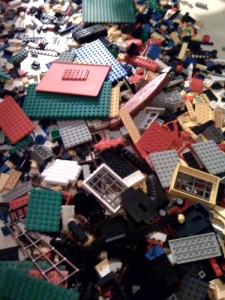![Double Helix]()
by Annie | Nov 29, 2010 | Game Design
What could be more fun than rhythm platforming on DNA strands? That’s the main premise behind my latest game concept, Double Helix. Double Helix is a run-forever rhythm platform game for iOS devices that combines the principles of real world DNA replication with the challenges of quick decision-making. In Double Helix, you play as Junior, a nanobot moving at a certain pace along an unwinding DNA double helix and replicating sequences of DNA to a certain beat. As the double helix unwinds, targets appear indicating missing nucleotides. Using clues in the sequence, you must find the correct nucleotide for each missing spot while staying on the beat. As it turns out, it takes a lot of minute details and tuning to create a game. Even for this deceptively simple game, the breakdown of individual game mechanics within my detailed design document has grown to well over half a dozen pages. Throw in descriptions of characters, enemies, features, controls, camera, and screen mockups, and you’ve got quite a large document on your hands. Here are some initial menu screen mockups for Double...

by Annie | Nov 22, 2010 | Game Design
Okay, so maybe game design doesn’t have trenches per se, at least not the same as in teaching, but as students, we’re definitely on the frontlines. Just ask any of the guys in my class who have pulled all nighters at school, alternating between Red Bulls and naps on the floor, eager to add in that extra feature or refine the core mechanic just a bit more. On second thought, I think this counts as trenches. After hundreds of hours spent designing, scripting, and testing levels, I can safely say that I know a bit more about level design than I did when I arrived in Vancouver 6 months ago. Here are a few lessons for the road: 1. Put railings on things. As it turns out, players don’t particularly like to fall off the edge of your level into the abyss of nothingness for no apparent reason. Just like in real life, virtual navigation requires railings, gates, and appropriately sized stairs. Now you know. 2. Think before you script. It’s easy to get lost in a sea of code, coming up with “creative” and often unelegant solutions to simple problems. Always script with a plan. Break down your goal into the base components, then link them together in logical ways. Use your brain. 3. Save often. Save progressively. Save progressively often. For my last level, I made well over 100 progressive saves over the course of five weeks. Not too bad, but I’m already on version 22 just 2 days into my current level. Why? Because you never know. Undos are not always as reliable as you think,...

by Annie | Nov 16, 2010 | Other
In order to bring effective educational games to the classroom, those classrooms must first have sufficient technology necessary to access those games. Increasingly, schools and colleges are putting handheld devices such as clickers into the hands of students, providing an instantaneous method of feedback that teachers can use to adjust their teaching while actually teaching. So far, such devices have been used for such purposes as taking attendance, responding to class quiz/poll questions, and signaling confusion over a concept. As such technology becomes more widespread and sophisticated, the ideal of each student receiving a personally tailored education suited to his/her own learning style and pace becomes more and more...

by Annie | Nov 12, 2010 | Game Design
3am the night before our latest UDK level was due, half the class was still in the classroom. Most would stay overnight, camping out at school from 9am Monday through midnight the next night. Five weeks may sound like a long time to complete a 5-10 minute single player experience, but when you have to create everything from the concept and layout to mechanics and scripting from scratch, even ten weeks sounds like a tight squeeze. My Factory Frenzy level has certainly come a long way, from the original puzzle idea when I was first learning kismet, to the tentative cell diagram, and finally, to the finished level, complete with cinematics, sound effects, enemies, and a boss puzzle. You start the level by taking a helicopter ride from an island to a nearby factory. You’re prompted to shoot the colored panels to get through the factory. You soon encounter enemies, lit up with red lights. As you shoot them, you neutralize them, turning them green. Eventually, you make your way to the main assembly line area, where you start in on the first puzzle. You must stand on the moving platforms of the conveyor belts to shoot the panels of the same color, all while dodging enemy fire. Be careful though – the enemies in this area don’t stay permanently neutralized; after a certain period, their green lights blink, and then they reactivate and turn red again. After shooting all the colored panels in the required sequence, you progress to the boss puzzle, a Simon Says game of sorts. You must remember the codes you’re given in order to...

by Annie | Nov 8, 2010 | Game Design
Very few great games are created by single individuals, so even the most genius game designers must learn to work in a team. Just like public speaking, teamwork is a skill that must be practiced. In our team management class last week, we worked in teams to create level mockups using Legos, but with a few stipulations. Lego Starcraft Level – 10 minutes – No talking – Only 1 person could gather Legos – If more than 1 Lego block fell on the floor, the team would be disqualified – Additional stipulation halfway through: no blue pieces could be used Lego God of War Level – Everyone could talk – Every team had one leader, who could order everyone else around. – All other team members could only say “Yes, sir!” and do only what the leader commanded. Many laughs later, we definitely got the message that communication and shared vision are key to successful...




